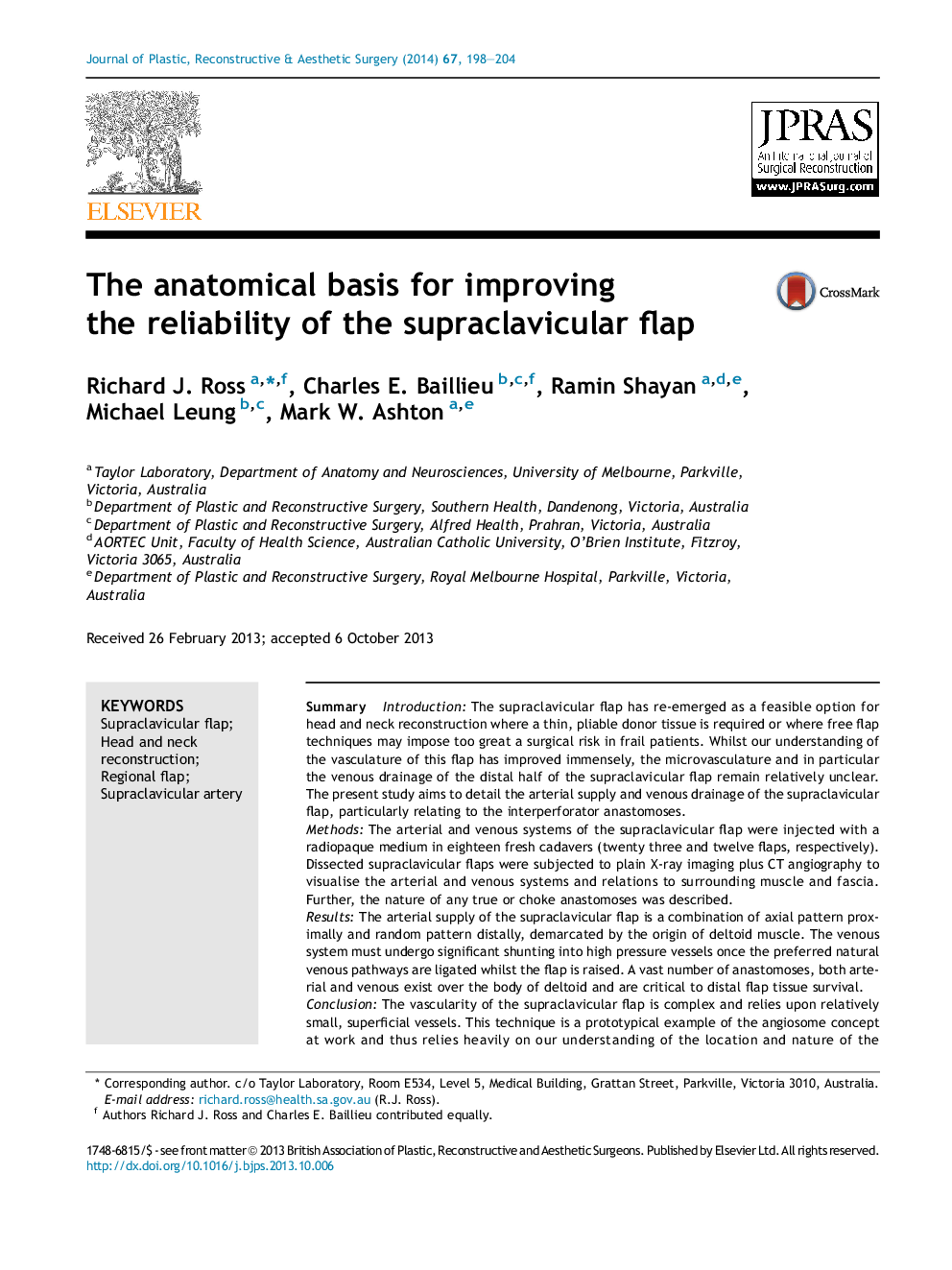| کد مقاله | کد نشریه | سال انتشار | مقاله انگلیسی | نسخه تمام متن |
|---|---|---|---|---|
| 4118139 | 1270325 | 2014 | 7 صفحه PDF | دانلود رایگان |
SummaryIntroductionThe supraclavicular flap has re-emerged as a feasible option for head and neck reconstruction where a thin, pliable donor tissue is required or where free flap techniques may impose too great a surgical risk in frail patients. Whilst our understanding of the vasculature of this flap has improved immensely, the microvasculature and in particular the venous drainage of the distal half of the supraclavicular flap remain relatively unclear. The present study aims to detail the arterial supply and venous drainage of the supraclavicular flap, particularly relating to the interperforator anastomoses.MethodsThe arterial and venous systems of the supraclavicular flap were injected with a radiopaque medium in eighteen fresh cadavers (twenty three and twelve flaps, respectively). Dissected supraclavicular flaps were subjected to plain X-ray imaging plus CT angiography to visualise the arterial and venous systems and relations to surrounding muscle and fascia. Further, the nature of any true or choke anastomoses was described.ResultsThe arterial supply of the supraclavicular flap is a combination of axial pattern proximally and random pattern distally, demarcated by the origin of deltoid muscle. The venous system must undergo significant shunting into high pressure vessels once the preferred natural venous pathways are ligated whilst the flap is raised. A vast number of anastomoses, both arterial and venous exist over the body of deltoid and are critical to distal flap tissue survival.ConclusionThe vascularity of the supraclavicular flap is complex and relies upon relatively small, superficial vessels. This technique is a prototypical example of the angiosome concept at work and thus relies heavily on our understanding of the location and nature of the anastomoses along its course. We conclude that the supraclavicular flap remains a reliable method for reconstructing head and neck defects so long as the constraints of a complicated suprafascial vascular system are respected.
Journal: Journal of Plastic, Reconstructive & Aesthetic Surgery - Volume 67, Issue 2, February 2014, Pages 198–204
